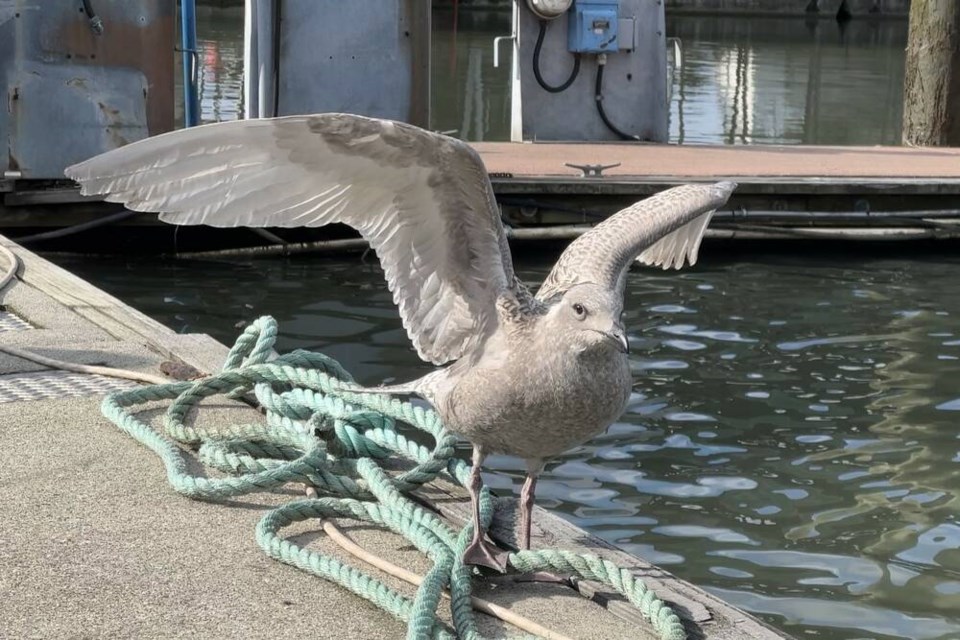Warning: This article contains an image of an injured animal that may be disturbing to some readers.
A young seagull with a wooden barbecue skewer punctured through its neck and throat has been released after a remarkable recovery.
The seagull was brought to the docks in the Bridgeport area at 8311 River Rd. along with another rescued seagull on Friday morning.
After a little hesitation, it hopped out of its carrier and explored the docks while basking in the sun.
Just as volunteers thought it was going to stay grounded on the docks, it stretched its wings and took off into the morning skies.
Members of the community spotted the injured seagull on the same docks around two weeks ago.
Photos of the its injuries show about two inches of the skewer lodged into its head through its neck and throat.
Volunteers of the Wildlife Rescue Association of B.C. were called to the scene and managed to capture it using a leg trap.
“Its condition wasn’t too poor. So it was still eating, we think, but it obviously needed intervention. But it helped that he was in a good condition,” said Linda Bakker, Wildlife Rescue spokesperson.
The seagull was taken in by the rescue and underwent surgery to have the skewer removed.
“We’re so fortunate to work with Dewdney Animal Hospital with Dr. (Andrew) Walton (who) sedated the gull, removed the skewer, cleaned out the wounds and stitched it up,” Bakker explained.
The seagull was placed in recovery with another seagull rescued from Vancouver, where it was able to heal completely.
“He’s doing exceptionally well,” said Bakker.
Wildlife Rescue volunteer Anneka Vanderpas, who rescued the seagull, said it felt “absolutely incredible” to see its release.
“For me, happy tears were shed a couple of weeks ago, and seeing it released now, I’m going to cry again,” she said.
If community members see birds in distress, Bakker suggests they should monitor the situation, take photos and videos and contact Wildlife Rescue so experts can determine how best to help the birds.



